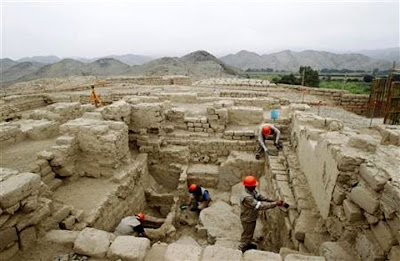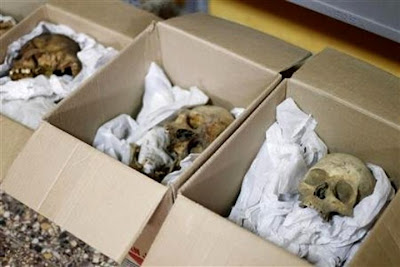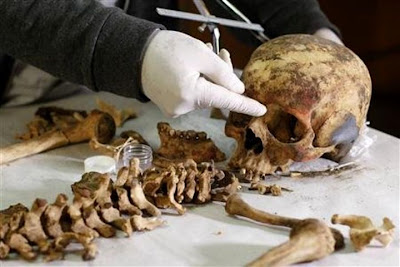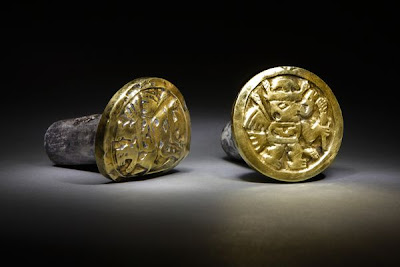Guest
Guest
 |  Subject: Unlooted Royal Tomb unearthed in Peru Subject: Unlooted Royal Tomb unearthed in Peru  Sat Jun 29, 2013 6:40 am Sat Jun 29, 2013 6:40 am | |
| Unlooted Royal Tomb unearthed in Peru
Archaeologists in Peru on Thursday said they have unearthed a massive royal tomb full of mummified women that provides clues about the enigmatic Wari empire that ruled the Andes long before their better-known Incan successors.

| Workers brush the remains of a coastal pyramid site called El Castillo
de Huarmey [Credit: Reuters/Enrique Castro-Mendivil]
|
"For the first time in the history of archeology in Peru we have found an imperial tomb that belongs to the Wari empire and culture," lead archeologist Milosz Giersz said.
Researchers said the discovery will help them piece together life in the Andes centuries before the rise of the Incan empire, which was written about in detail by the conquering Spaniards.

| Skulls belonging to women from the Wari Mepire are placed in boxes after being discovered
at El Castillo de Huarmey [Credit: Reuters/Enrique Castro-Mendivil]
|
The mausoleum, unearthed a few months ago at a coastal pyramid site called El Castillo de Huarmey 185 miles north of Lima, contained gold pieces, ceramics and 63 skeletons about 1,300 years old.
Researchers said most of the bodies found in the burial chamber were mummified women sitting upright - indicating royalty and suggesting Wari women held more power than previously thought.

| An archaeologist measures the remains of a woman believed to be a member of the royal
family of the Wari Empire [Credit: Reuters/Enrique Castro-Mendivil]
|
"The women were buried with finely engraved ear pieces made of precious metals that once were believed to be used only by men," archaeologist Patrycja Przadk said.
Historians believe the Wari, who ruled between 600 and 1100 A.D., were the first people to unite diverse tribes into a sophisticated network across most of today's Peruvian Andes.

| Gold and silver ear ornaments found by archaeologists
[Credit: Daniel Giannoni/National Geographic]
|
Bioarchaeologist Wieslaw Wieckowski said six skeletons were not wrapped in textiles and appear to have been human sacrifices for the mummified elite.
"They were people thrown into the grave before the grave was sealed," he said. "They were lying on their bellies, in an extended position and their limbs went in different directions."

| A ceramic flask and drinking cup found at El Castillo de Huarmey
[Credit: Patrycja Przadka Giersz/National Geographic]
|
Archaeologists told National Geographic that they kept their work quiet for fear grave robbers would pick the site clean.
http://archaeologynewsnetwork.blogspot.com/2013/06/unlooted-royal-tomb-unearthed-in-peru.html#.Uc7Gz_ksm-c
|
|





